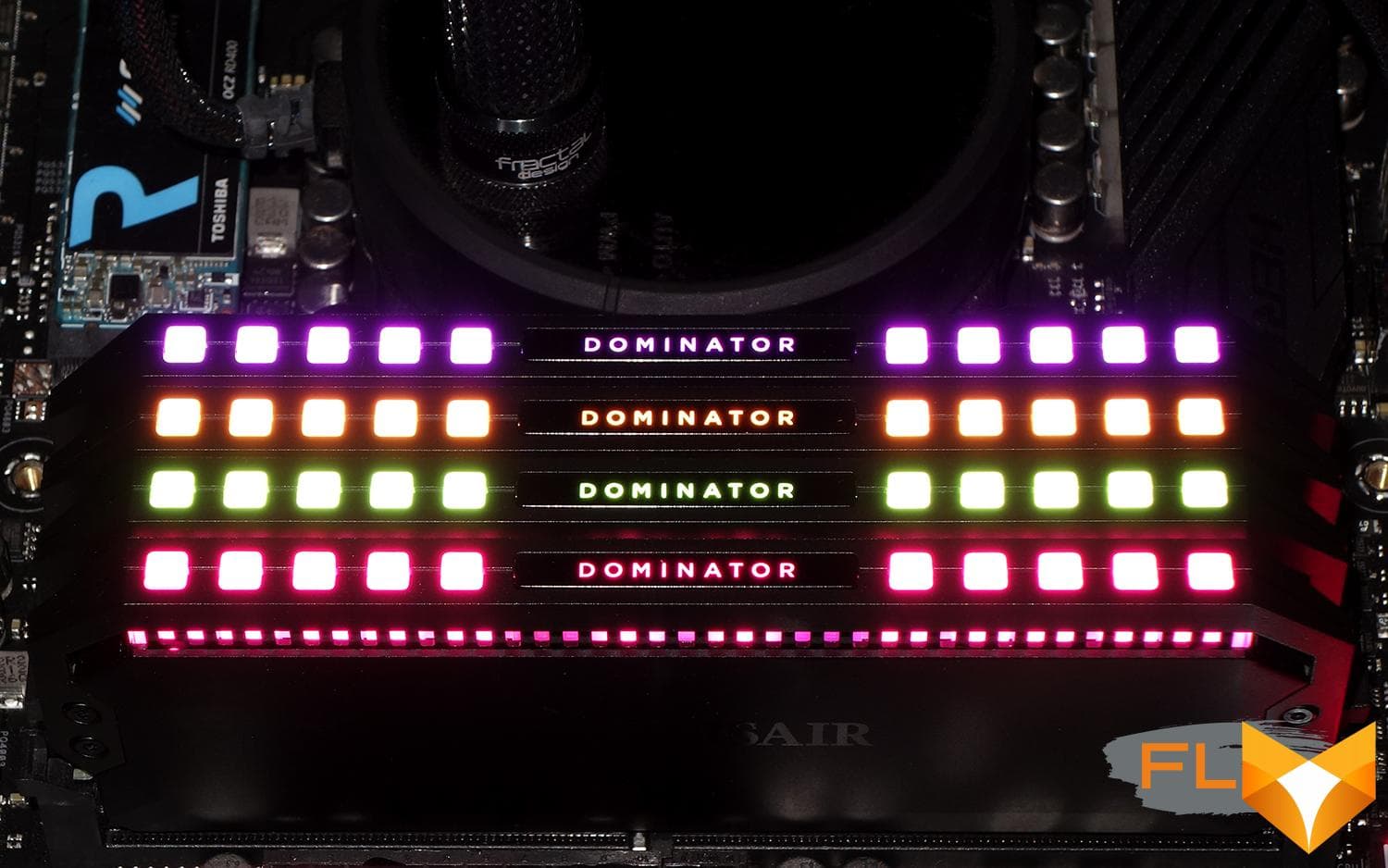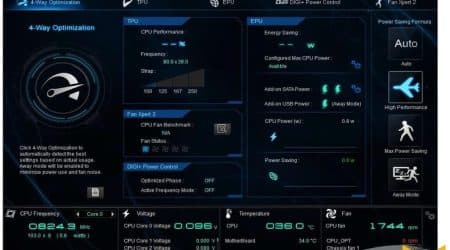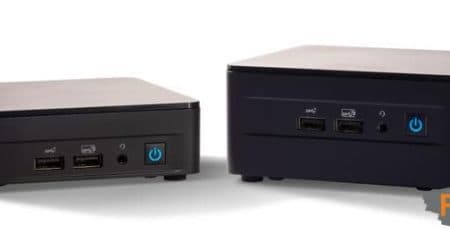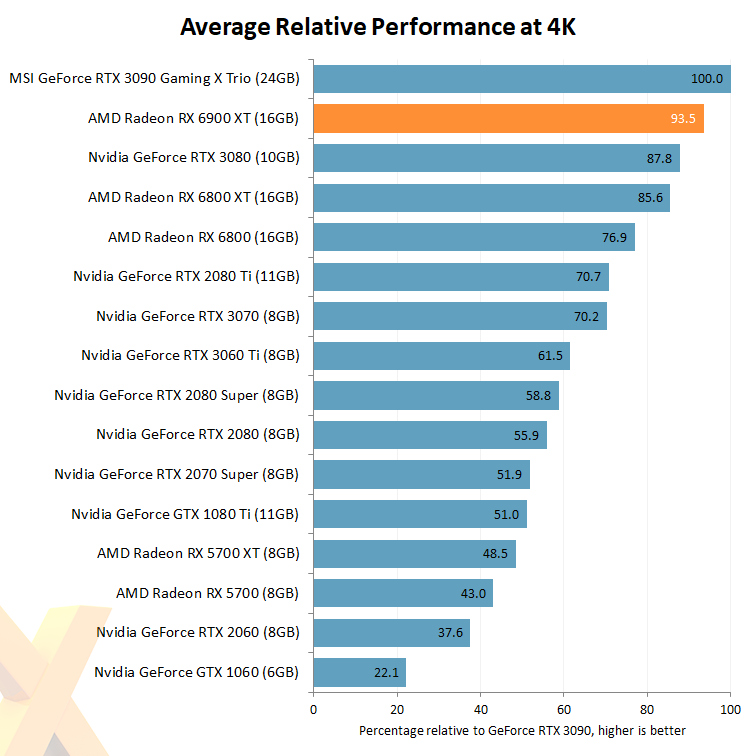


AMD has been consistently gaining ground in the gaming community with its high-quality and optimized GPUs. Two such noteworthy entrants from the company that have drawn considerable attention are the Radeon RX 6800 XT and the Radeon RX 6900 XT. While both these powerhouse GPUs offer an unparalleled gaming experience, it’s their unique subtleties that separate one from the other. This article aims to untangle these nuances, providing a deep dive comparison and extensive performance review of RX 6800 XT and RX 6900 XT.
This in-depth comparison is essential for gamers and tech enthusiasts who are increasingly investing in GPUs not just for high-octane gaming but also for various intensive tasks, including video editing and 3D modelling. The in-depth analysis will guide you through the specifics of each model, simultaneously shedding light on their respective pros and cons to make a well-informed purchase decision.
Note: It’s important to remember that though the RX 6800 XT and RX 6900 XT fall under the same 6000 series, they are designed to cater to different consumer segments and, therefore, feature distinct capabilities and specifications. Thus, choosing between the two greatly depends on your specific needs and preferences.
Initial Insights into the AMD Radeon RX 6800 XT and 6900 XT
The AMD Radeon RX 6800 XT and 6900 XT, two powerful GPUs, deserve significant attention within the gaming community. Both models have distinguishing features and benefits that enable high-performance gaming at impressive resolutions.
The Radeon RX 6800 XT is a strong contender in the high-end GPU market, capable of delivering extraordinary gaming performance at high resolutions. It comprises 72 compute units, 16GB of GDDR6 memory and a ray accelerator, enabling seamless gaming experiences for the most demanding tasks. Furthermore, it supports DirectX 12 Ultimate and has a boost clock speed of up to 2250 MHz, crucial for competitive gaming.
Meanwhile, the Radeon RX 6900 XT is the flagship model in AMD’s 6000 series. This GPU extends beyond the 6800 XT, offering gamers an impressive 80 compute units. Its boost clock speed also stands at a remarkable 2250 MHz. Given its 16GB GDDR6 memory and top-tier ray accelerator, it has proven ideal for gaming enthusiasts who demand exceptional performance levels.
- Specifications for Radeon RX 6800 XT:
- Compute units: 72
- Boost clock: Up to 2250 MHz
- Memory: 16GB GDDR6
- Ray accelerators: Yes
- Specifications for Radeon RX 6900 XT:
- Compute units: 80
- Boost clock: Up to 2250 MHz
- Memory: 16GB GDDR6
- Ray accelerators: Yes
In summary, both the Radeon RX 6800 XT and 6900 XT are built to provide exceptional gaming experiences. However, for those seeking the utmost performance, the 6900 XT with its increased number of compute units may be the preferred choice.
Key Characteristics of the AMD Radeon RX 6800 XT
The AMD Radeon RX 6800 XT graphics card comes packed with a host of impressive features that make it a strong competitor in the high-end GPU market.
High Clock Speed: One of the primary attributes of the RX 6800 XT is its superior clock speed. With a boost clock speed of up to 2250 MHz, this GPU promises high-end performance for gaming and demanding applications.
Advanced Processing Technology: The RX 6800 XT utilizes AMD’s RDNA 2 architecture. This includes new technologies such as DirectX Raytracing (DXR), variable rate shading and others, taking gaming experiences to a whole new level.
Generous VRAM: The 6800 XT comes equipped with an abundance 16GB of GDDR6 memory, ensuring smooth performance in graphically intensive tasks and games.
High Performance in 4K Gaming: This graphics card handles 4K gaming exceptionally well. Games run smoothly with high frame rates, making the 6800 XT a powerhouse for 4K gaming experiences.
Infinity Cache: A pivotal feature of this GPU is AMD’s Infinity Cache. This 128MB of on-die cache dramatically reduces latency and power consumption, providing higher overall gaming performance.
Here’s a brief breakdown of the AMD Radeon RX 6800 XT specifications:
| Architecture | RDNA 2 |
| Boost Clock Speed | Up to 2250 MHz |
| Memory Size | 16GB GDDR6 |
| Infinity Cache | 128 MB |
In conclusion, the AMD Radeon RX 6800 XT boasts powerful gaming performance, with advanced features and technology that set it apart in the market.
Highlighting the Main Elements of the AMD Radeon RX 6900 XT Graphics Card
Recognized for its exceptional capability of delivering unprecedented levels of gaming performance and power efficiency, the AMD Radeon RX 6900 XT is a top-tier graphic card equipped with several key attributes.
Noteworthy Performance Capability
The 6900 XT augments stunning gaming performance owing to its compatibility with PCI Express 4.0, allowing twice the bandwidth compared to the previous generation. Coupled with this, a powerful GPU of 80 compute units and the RDNA 2 architecture together drive superior visual effects and computational applications.
Innovative Infinity Cache
One outstanding feature of the RX 6900 XT is the 128MB Infinity Cache, an innovative method that AMD developed to successfully amplify gaming efficiency. This setup greatly minimizes latency, providing heightened performance and resolution for persistent gamers.
Radeon Anti-Lag and FidelityFX
Moreover, the RX 6900 XT is engineered to reduce input lag with its Radeon Anti-Lag and Radeon Boost features. These contribute to a more fluid, swift, and responsive gaming experience. The graphic card also comes along with FidelityFX which enhances in-game lighting, shadows, and reflections, providing an intriguing and lifelike gaming environment.
Striking Ray Tracing Capabilities
The RX 6900 XT, embedded with DirectX 12 Ultimate Support, magnifies realistic lighting, shadows, and reflections in games that support DirectX Raytracing. This opens a whole new realm of game graphics, crafting an immersive user experience.
In essence, the AMD Radeon RX 6900 XT stands as an undisputable choice for gamers, enthusiasts, and professionals seeking advanced features, ultimate performance, and high-level gaming experience.
Detailed Examination: The Design Aspect of 0 XT and 6900 XT
Delving into the design comparison between the two GPUs, the 0 XT and 6900 XT, we notice some distinctive disparities as well as a few striking similarities.
Exterior Build and Aesthetics
The 0 XT and 6900 XT both sport a sleek, attractive design that leans towards a minimalist aesthetic. They exhibit a robust, matte black shroud that encloses the components. Differentiating them, however, is the ‘XT’ moniker that is boldly etched on the 6900 XT, while its counterpart flaunts a simpler, more subtle labeling.
Size and Form Factor
Though overall similar in size, there are minute differences that set these GPUs apart. Notably, the 6900 XT tends to be slightly larger than the 0 XT, making the latter a more suitable choice for users with space constraints or smaller PC cases. Despite this, both GPUs maintain a dual-slot design that has become common in contemporary graphics cards.
Cooling Solutions
Another aspect that is crucial to efficient GPU performance is the cooling system. Both the 0 XT and 6900 XT incorporate a triple-fan design to keep temperatures low during high-performance gaming and rendering tasks. However, the heat sink configuration and heat-pipe arrangement are somewhat different, enabling unique cooling performance in each card.
I/O and Connectivity
In terms of connectivity, both GPUs offer a similar array of ports, including DisplayPort outputs and an HDMI port. However, the 6900 XT touts a USB-C port for increased versatility, which is absent in the 0 XT.
In conclusion, While the 0 XT and 6900 XT maintain some commonalities in their aesthetic appeal and footprint, they diverge in certain aspects like size, cooling solutions, and connectivity options, which allows users to choose based on their specific requirements and preferences.
Analysing the Cooling Solutions in the Radeon 0 XT and 6900 XT Models
While comparing the Radeon 0 XT and 6900XT graphics cards, one must also delve into the cooling systems integrated into these devices. Efficient cooling is essential for maintaining the graphics processing unit’s (GPU’s) performance and longevity. Overheating can significantly impair a GPU’s operation, leading to decreased performance and system stability, or even permanent damage to the card.
Examining the Radeon 0 XT’s Cooling System
The cooling structure on the Radeon 0 XT is well designed to manage the heat generated by the graphics card during operation. It incorporates a tri-axial cooling system in a dual-slot design, which caters to both adequate air circulation and space efficiency within a computer build. This triple-fan solution, combined with a heat sink and heat pipes, dissipates heat effectively, ensuring that the GPU operates within acceptable temperature thresholds under load. It also features an intelligent fan control strategy that balances noise levels with cooling requirements.
Assessing the Radeon 6900XT’s Refrigeration Scheme
In contrast, the Radeon 6900XT uses a more advanced cooling technology. It boasts a dual axial-fan design coupled with thermal sensors for precise thermal monitoring and management. The thermal design incorporates a large vapor chamber for efficient heat dissipation, accompanied by multiple heat-pipes that further aid in cooling the high-performance GPU. The fans on the 6900 XT only spin up when the card reaches a specific temperature, keeping noise levels low during low to medium workloads.
A Summary of the Cooling Solutions
- Both Radeon 0 XT and 6900XT offer effective cooling systems. However, the 6900XT uses a more advanced and efficient thermal design.
- The 0 XT’s tri-axial cooling and dual-slot design maximize air circulation while saving space.
- In contrast, the 6900XT employs a dual axial-fan design and extensive use of heat-pipes for precise thermal management.
In conclusion, both the Radeon 0 XT and 6900 XT boast robust cooling systems, which are crucial for maintaining performance levels and hardware longevity. However, the advanced features in the 6900 XT likely give it an edge over the 0 XT when it comes to managing heat effectively.
Analysis of Gaming Performance between the 6800 XT and 6900 XT
While comparing two of the most advanced graphics cards available on the market from the same series, the Radeon 6800 XT and 6900 XT, it’s worth looking at their performance in gaming tasks. The Radeon 6800 XT and 6900 XT both deliver high quality performance, but there are distinct differences that may affect the preferences of serious gamers.
Performance Assessment for various Games
During the assessment with various high-end games, the 6900 XT generally outperforms the 6800 XT. In Cyberpunk 2077 at 1080p resolution, the 6900 XT was commonly found to have an edge over the 6800XT. Moreover, complex titles such as Control, where ray tracing effects are heavily utilised, had noticeably smoother performance and higher frames-per-second when using 6900 XT.
Benchmarks: 6800 XT vs. 6900 XT
- Control: 6900 XT had approximately 10% higher FPS
- Cyberpunk 2077: 6900 XT had a marginal 3% lead
- Red Dead Redemption 2: Comparable performance with marginal lead to 6900 XT
Nevertheless, it’s important to note that both GPUs deliver powerful performance and should be more than capable of achieving high frame rates in contemporary computer games at very high settings.
Assessing VR Performance
In terms of Virtual Reality (VR) gaming, both GPUs prove to be reliable choices for delivering smooth and seamless gameplay. The additional processing power of the 6900 XT can provide an added edge in more demanding VR titles. However, both GPUs should provide a satisfying gaming experience in most VR titles.
In conclusion, while the performance difference between the Radeon 6800 XT and 6900 XT isn’t vast, enthusiasts wanting to squeeze the maximum performance out of their system might be inclined to go for the 6900 XT. The 6800 XT, on the other hand, provides an excellent balance of price and performance for the majority of gamers.
Comparing the Performance: 6800 XT vs 6900 XT
Results from Benchmark Testing
When examining the performative capabilities of AMD’s Radeon RX 6800 XT and 6900 XT graphics cards, we can gain deeper insight through rigorous benchmark testing.
Graphic-intensive tests: The 6900 XT showed superior performance in graphic-intensive tests, including 3DMark Time Spy and Fire Strike. It’s evident that the 6900 XT outperforms the 6800 XT in contexts requiring heavy graphic processing.
Game-level tests: In terms of gaming performance, both cards delivered high frame rates in popular games such as Shadow of the Tomb Raider, Far Cry 5, and Red Dead Redemption 2. However, the performance gap narrowed, and the 6800 XT, while marginally inferior, showed impressive performance close to the 6900 XT.
- Shadow of the Tomb Raider: Both cards maintained frame rates above 100 FPS on Ultra Settings (1440p), but the 6900 XT had a slight edge.
- Far Cry 5: Again, the 6900 XT led with an advantage of almost 10 FPS over the 6800 XT.
- Red Dead Redemption 2: Both cards performed almost similarly with very negligible differences in frame rates.
In ray-tracing enabled games, the 6900 XT was a clear winner, with higher frame rates and superior ray-tracing performance.
These results show that while both cards deliver top-level gaming performance, the AMD Radeon RX 6900 XT outperforms the 6800 XT, especially in contexts requiring high-level graphics processing or ray-tracing capabilities. Therefore, the 6900 XT could be the better choice for professional users or serious gamers seeking the highest level of performance in their graphic card. The 6800 XT is not far behind, offering near similar performance at a lower cost.
Examining the adaptability of the 6800 XT and 6900 XT with VR and 4K technology
When it comes to the compatibility of the Radeon 6800 XT and the Radeon 6900 XT with Virtual Reality (VR) and 4K technology, both graphics cards perform remarkably. They have been designed to support these advanced technologies, offering gamers with breathtaking and immersive gaming experiences.
Let’s delve deeper into how these cards gel with VR and high-definition gaming.
Compatibility with Virtual Reality
In the realm of VR, both these graphic cards stand out in stellar fashion. Their ability to handle VR’s intensive graphical demands is impressive. The Radeon 6800 XT matches up to the demands of VR gaming owing to its boosted clock speeds. It harnesses the capability to render graphic-intensive VR games without any major hiccups. The Radeon 6900 XT, on the other hand, sets the bar even higher. Known for its extensive power and efficiency, this card takes VR gaming to a whole new level. It efficiently manages the demand for high frame rates needed in VR, providing gamers with a smooth, uninterrupted virtual experience.
Performance on 4K
A significant aspect of these graphics cards is their adaptability with 4K games. The Radeon 6800 XT and Radeon 6900 XT are finely equipped to handle 4K gaming’s rigorous requirements. The 6800 XT delivers an excellent performance for 4K games, ensuring detailed and clear visuals. The 6900 XT steps it up a notch with its performance. It’s equipped with higher performance components, yielding faster frame rates at 4K. This means smoother gameplay with almost no noticeable delay.
To sum up, the Radeon 6800 XT and Radeon 6900 XT showcase impressive compatibility with VR and 4K gaming. They not only meet but exceed the graphical demands of these technologies, offering gamers with seamless and immersive experiences.
Financial Consideration: Does Paying More for the 6900 XT Make Sense?
When considering the financial aspects, it’s important to consider the performance difference between the Radeon 6900 XT and its slightly lower-end sibling, the 6800 XT. Like any investment, the value isn’t about the upfront cost alone, but also, what you get in return.
For people focused on gaming alone, the 6800 XT is more than capable of superior performance. It delivers high frame rates even at 4K resolution with max settings on most of recent and popular games. In other words, for gamers, the price premium for the 6900 XT might not translate into a noticeable increase in gaming performance.
Understanding the Value of 6900 XT
On the other hand, for those who need to perform heavy graphic tasks and professional 3D rendering, the additional investment in the 6900 XT could be justifiable. The extra raw computational power and high VRAM capacity enable super smooth performance under heavy graphic loads. Therefore, the real value of the 6900 XT comes out when you’re pushing the boundaries of what’s technically possible in terms of graphic rendering and precision calculations.
In conclusion, deciding whether the higher price of the 6900 XT is justified or not, highly depends on the user’s needs. High-end gamers and graphic professionals might see that it’s worth the extra money, whereas-average gamers might not see much difference in their gaming experience to justify the increase in cost.
- For Average Gamers: The 6800 XT could provide a more cost-effective solution, providing excellent performance for most games at a less premium price.
- For High-end Gamers and Graphic Professionals: The extra investment in the 6900 XT could be a wise decision, aiding demanding graphics tasks and providing superior performance.
Concluding Thoughts: The Best Choice between the Two
The final choice boils down to your unique gaming and computing needs, as well as budget considerations – either the 6800 XT or the 6900 XT could prove to be the optimal graphics card for you.
If you are a casual gamer who doesnt indulge in high-end gaming or programming tasks and is looking for a more budget-friendly option, then one could conclude that the 6800 XT would serve your needs adequately. Offering strong performance at QHD and 4K resolutions, it is a sturdy and powerful GPU. It achieves a good balance between cost and performance and hence, is one of our go-to recommendations.
However, if you’re a hardcore gamer or a professional needing maximum firepower from your GPU, are willing to invest in the top shelf, and require the absolute pinnacle of performance, then the 6900 XT is undoubtedly your calling. This GPU dominates with unmatched 4K gaming and computational capabilities and offers a significant boost in performance.
Remember, both are excellent options for any gamer or professional. Just align your choice to your unique demands and get ready to level up your gaming or programming horizon!
FAQ 6800 xt vs 6900 xt:
Which should I choose between a laptop and a tablet for work?
It depends on your work necessities. If your work requires heavy programs and multitasking, a laptop would be a better choice given its better processing power and larger storage. If it’s mainly for casual browsing, note-taking or presentations, a tablet would suffice due to its portability.
Should I choose Android or iOS?
Both platforms have their merits. If you prefer customization and a wide range of devices to choose from, you might want to choose Android. If you prefer simplicity, seamless integration with other Apple devices and regularly updated applications, iOS might be a better choice.
Which programming language should I choose to start with as a beginner?
Python is often recommended for beginners due to its relatively simple syntax, readability, and a large and supportive community.
Should I choose a career which is high paying or one that is low paying but I really love?
It’s always better to choose a career you love and are passionate about. Initially, it may be less paying, but as you excel in it out of love and gain experience, the financial benefits often follow. However, be sure to consider your individual financial conditions and responsibilities.
In terms of environmental friendliness, should I choose electric cars or hybrid cars?
Electric cars are generally more environment-friendly than hybrid cars. They emit no tailpipe pollutants, and their overall emissions can be lower if charged with renewable electricity. However, hybrid cars comparatively have better range and are more efficient for long trips.
Should I choose a diet based on my blood type?
There is no scientific evidence supporting the effectiveness of eating according to your blood type. It’s best to maintain a balanced diet and consult a dietitian to customize your diet according to your bodily needs rather than your blood type.





